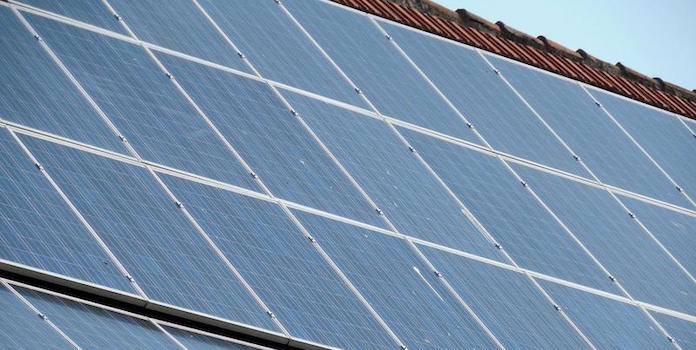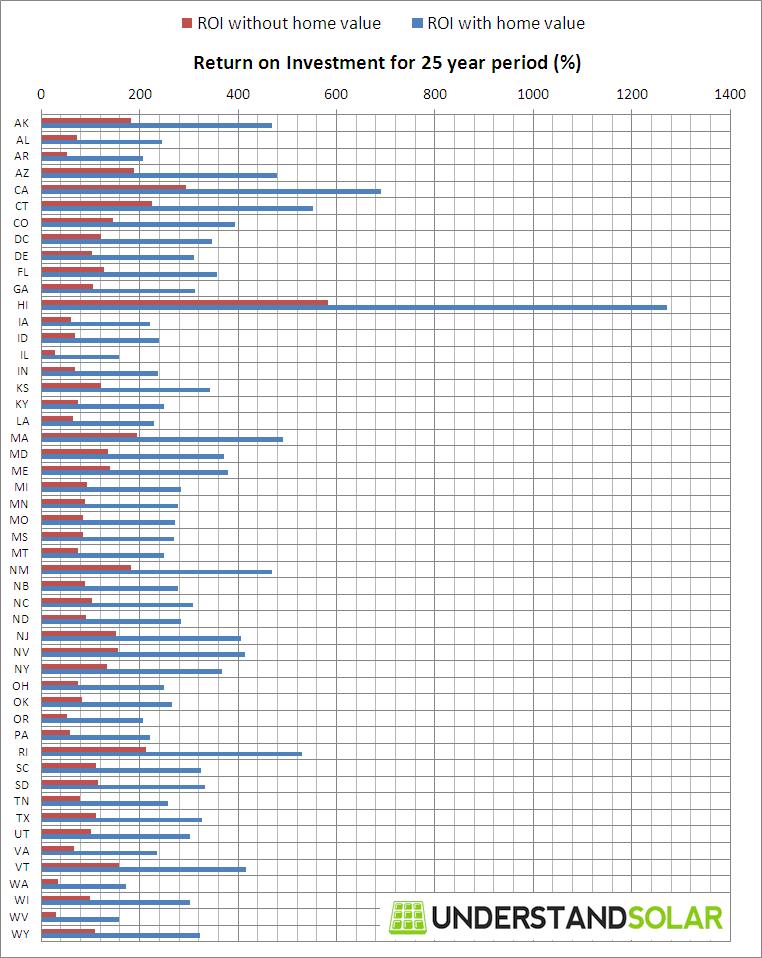An Overview on Solar Panels ROI (Return On Investment)

When you make a costly investment like going solar, you’re going to wonder: what will my solar panels ROI be?
You’re here. And because you’re here looking at Solar Panels ROI, you must be one of three types of people:
a) You’re pondering going solar, and you want to see just how good the ROI is.
b) You’ve already gone solar, and have now realized that knowing the ROI would perhaps be a good idea.
c) You’re hopelessly lost and are actually looking for an informative piece about fire-breathing amphibians.
If you’re a) or b), then boy do we have the article for you. If you’re c), then we regret to inform you that what you’ll find below is devoid of information pertaining to your research, but you’re welcome to join us anyway.
Give Me the ROI In Once Sentence, Please
So, there’s good news and bad news.
The bad news is… there’s no one-size-fits-all ROI. It depends on a number of factors, such as the amount of sunshine you get, state incentives, and your electricity costs. So if you came here hoping for a nice number to take home, we’re sorry to tell you that it’s not going to happen.
But now for the good news: we have a nice formula that calculates the average ROI in each state. So while we can’t give you an exact figure, we’ll put you in the right ballpark. Savvy?
How to Calculate Solar Panels ROI
How do you get a return on your investment?
Say I invest $10 in your bespoke chandelier business. Now, no-one makes bespoke chandeliers quite like you do, and in 5 years time, your business has grown to three times its original size. I cash in on the investment and get $30 back.
What’s my ROI?
In this case, that’s 100*($30-$10)/$10 = 200% ROI. Not bad at all.
But wait, do you get 200% ROI over a year, or 200% ROI over 3 years?
Good question. As you can see from the formula, ROI doesn’t take time into account. It’s a blunt measure of how much money you put in, and how much you get back out again. So for solar panels, then, how do we define ROI?
We’ll measure ROI over the panel’s lifetime. As the industry-standard performance guarantee is 25 years, that’s the timeframe we’ll use.
The Formula, Please.
Ok. Here’s what we did. To find out your energy savings, we calculated your annual energy savings for each year, then added them together. Why? Because your energy savings per year will differ. One, your panels will suffer efficiency losses, and two, electricity costs change.
We took this into account. Here are the assumptions we made for the average ROI on solar panels:
- Solar Panel Price = $2930/kW
- Annual Rise in Electricity Prices = 2.9%
- Panel Performance Guarantees: 90% performance for first 10 years; 80% performance for next 15 years
- Derate Factor of 77%.
- Average Solar System Size = 5kW
- 30% Federal Tax Credit
- NO STATE INCENTIVES
Inflation was NOT taken into account. Electricity prices were taken for each state here, and daily sun hours for each state were averaged using information taken from this site.
The results are shown below:

Let me re-emphasise: state incentives were NOT included. However, the 30% federal tax was. Any state incentives will also increase the ROI because it reduces the amount of money you have to invest.
Trends:
- The sunnier it is, the higher the ROI.
- The higher the price of electricity, the higher the ROI.
- Investing in solar always gives you a net profit in the long run.
Clearly, different states with similar sunshine levels can have completely different ROI. This is due to electricity prices (and state incentives). Hawaii is an incredible place to go solar, with its combination of high electricity and daily hours of sun. California is the next best place to go solar, followed closely by Rhode Island, Connecticut, Maryland, and New Mexico.
Again, these figures are ball-park estimates. Before going solar, be sure to talk with solar companies, get the precise numbers for your area, and run your own calculations for more accurate results.
If you already have solar and are seeing a ROI, let us know in the comments!
Image Credit under CC License via Pixabay
